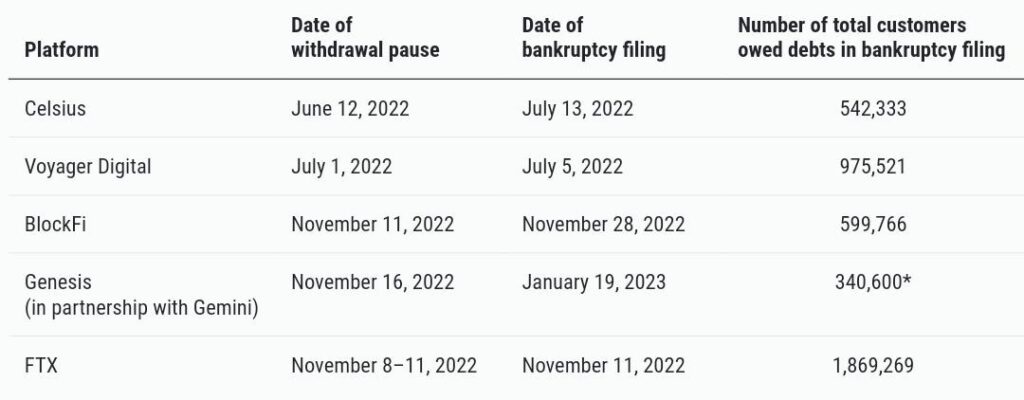- The Federal Reserve Bank of Chicago releases a letter on crypto runs of 2022.
- The bank’s letter covers the details of major crypto platforms that collapsed in 2022.
- The collapsed firms include Celsius, Voyager Digital, BlockFi, Genesis, and FTX.
The Federal Reserve Bank of Chicago (Chicago Fed) has released a letter combining the major crypto runs that happened in 2022. The bank pointed out the interesting background, data, and when these firms filed for bankruptcy. The letter takes users through Celsius, Voyager Digital, BlockFi, Genesis, and FTX.
The Chicago Fed mentioned that due to massive user withdrawals and investment losses, several crypto-asset platforms experienced a significant decline in 2022. These platforms provided a range of cryptocurrency-related products and services, such as custody, trading, and high-yield investments.
However, the Chicago Fed mentioned that since clients could withdraw money whenever they wanted while the platforms used it for speculative and hazardous investments, their business models were open to risk. A significant incident involving clients withdrawing a quarter of their money in a single day occurred on the FTX platform.
Promise of high-yield investment products
Customers on these platforms were particularly attracted to high-yield investment items. Clients looking for lucrative returns were drawn to them because they promised guaranteed interest rates that were higher than those offered by conventional investment choices.
The main investment options included stablecoins and non-stablecoin crypto-assets, with interest rates ranging from 7.4% to 9%. Even higher interest rates than usual were offered by some platforms on a few of the lesser-known cryptoassets they marketed.
What went wrong?
The examination of bankruptcy files revealed information about the withdrawals of customer money from other platforms. Among the main causes of crypto runs were the failure of Three Arrows Capital (3AC) and the collapse of the TerraUSD stablecoin.
Customers quickly withdrew their money in order to prevent possible losses. The platforms’ exposure to 3AC, which had lent the hedge fund billions of dollars, was a significant source of contagion. Massive customer outflows following FTX’s bankruptcy in November 2022 aggravated these platforms’ liquidity issues.
Data from the Chicago Fed shows that there have been $1.4 billion and $0.58 billion in withdrawals from Celsius between May 9 and June 12, 2022. The highest withdrawals were witnessed by FTX from November 6–11, 2022, with over $7.81 billion.

Regulatory measures are urgently needed, as evidenced by the important occurrence of the collapse of crypto-asset platforms in 2022.
Talking about regulatory scrutiny, the Chicago fed stated:
“The offering of high-yield investment products by platforms has been under regulatory scrutiny since at least 2021, when Coinbase announced it had received a warning from the U.S. Securities and Exchange Commission (SEC) that a prospective investment product could be a security.”
A volatile atmosphere vulnerable to runs and financial crises was produced by the lack of deposit insurance and the allure of high-yield investments. To protect investors and preserve the stability of the crypto-asset market, policymakers must address these issues.
Disclaimer: The information presented in this article is for informational and educational purposes only. The article does not constitute financial advice or advice of any kind. Coin Edition is not responsible for any losses incurred as a result of the utilization of content, products, or services mentioned. Readers are advised to exercise caution before taking any action related to the company.









